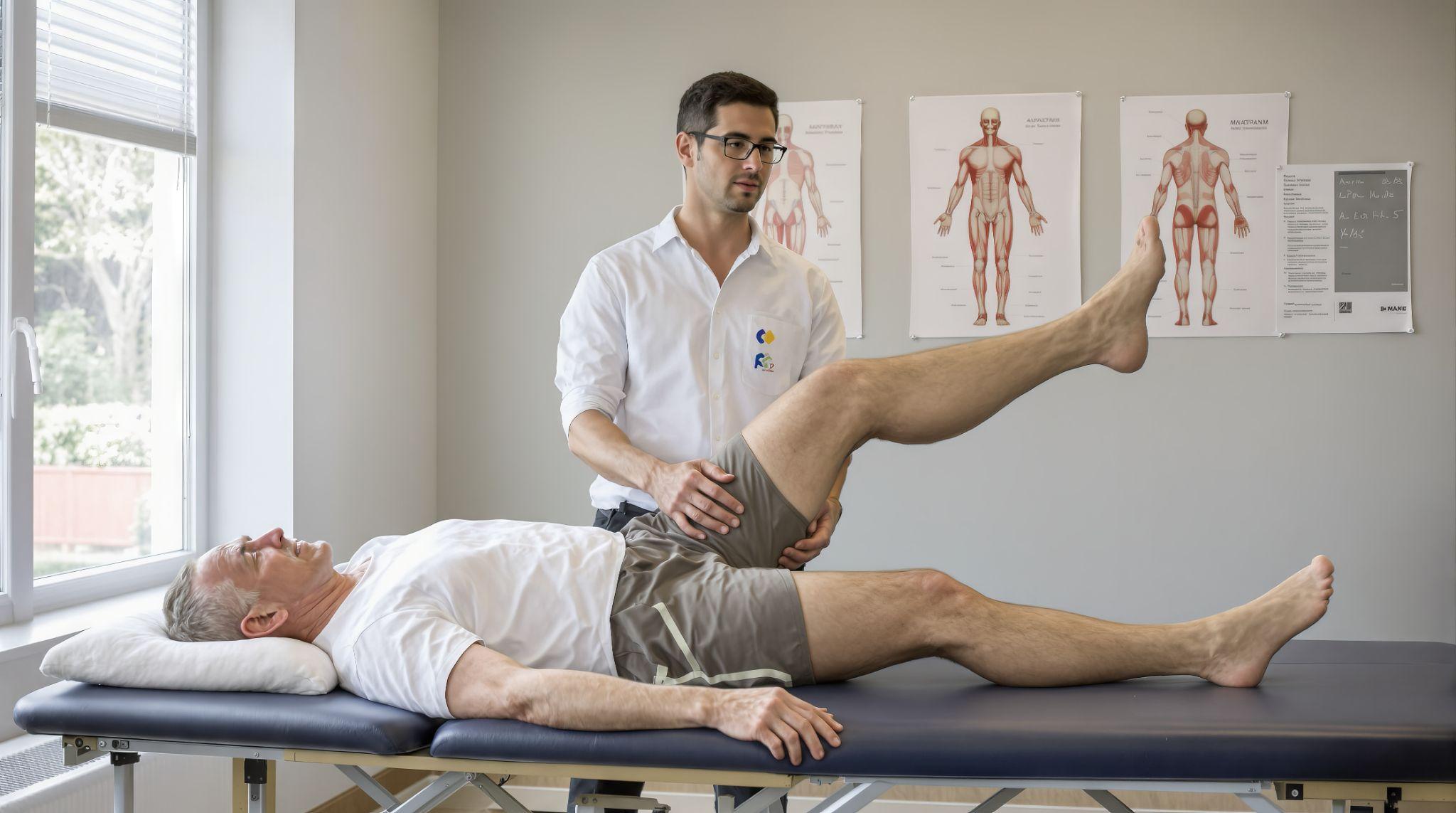Hip Replacement vs Hip Resurfacing: Which Type Is Best for You?

A total hip replacement involves replacing both the femoral head and the hip socket with prosthetic components to relieve pain and restore mobility.
Hip replacements are becoming increasingly popular these days, particularly among individuals who are living with arthritis, hip trauma, or joint deterioration from age. As pain and stiffness in the hip begin to interfere with daily living, such as walking, bending, or sleeping, physicians can recommend surgery as a possible solution.
Selecting the best type of hip surgery is extremely crucial for your comfort, recovery, and long-term health. The two most popular options are Total Hip Replacement and Hip Resurfacing.
Today, in this blog, we will explain both processes in very simple words, so you can know how they work, their pros and cons, and who they are ideal for. Whether you are a patient or a caregiver, this guide will assist you in making an informed decision.
What is a Total Hip Replacement?
A Total Hip Replacement is an operation in which the worn-out components of the hip joint are taken out and replaced with artificial components (implants). The hip joint is a ball-and-socket joint. During this operation:
- The ball (the head of the thigh bone) is excised and replaced by a metal or ceramic ball.
- The socket (component of the pelvic bone) is also sterilized and equipped with a cup-like implant.
This forms a new, slick surface so the joint can glide without hurting.
Why Choose Hip Replacement?
It is most often performed in older people with serious arthritis or joint wear and tear. It assists when the hip is severely worn out or deformed from illness or injury.
Individuals who are unable to walk well, have pain sitting down, or require support to move frequently get relief with this operation.
What is Hip Resurfacing?
Hip Resurfacing is another kind of operation. The top of the thigh bone is not completely taken out; instead, it is cut and shaped, and a metal cap is put on it. The socket is also resurfaced and covered with a metal cup.
Less bone is taken away from the thigh bone, particularly, during Hip Resurfacing compared to a complete hip replacement.
Why Hip Resurfacing?
It's a bone-conserving procedure that is okay for someone who might need surgery again later in life. It's most often recommended for younger, active patients (less than 60 years) with healthy, dense bones. It promotes more natural hip motion and can be superior for athletes and exercise. It's not for everyone. Osteoporosis or weak bones are reasons why some patients might not be ideal for resurfacing.
Key Differences Between Hip Replacement and Hip Resurfacing
Hip replacement and hip resurfacing are two common surgical options for treating severe hip problems, but they differ in the amount of bone removed, recovery time, and suitability for patients. In a traditional hip replacement, more bone is removed from the thigh bone and replaced with an artificial implant. This procedure is typically recommended for older individuals with advanced joint damage, as it provides long-lasting durability, often lasting 15-20 years or more. However, the smaller ball size used in hip replacement surgery can lead to a moderately higher risk of dislocation compared to resurfacing.
On the other hand, hip resurfacing surgery preserves more of the patient’s natural bone by reshaping and capping the hip joint rather than removing large portions of it. This bone-conserving method often allows for quicker recovery since the bone structure remains largely intact. Hip resurfacing is generally best for younger, active patients with strong, dense bones, as it can provide greater mobility and a lower risk of dislocation thanks to the larger ball and socket design. However, it may not last as long as a full replacement, particularly in women, where wear and tear can occur more quickly.
Hip Replacement vs Hip Resurfacing: Which Method is Best for You?

After the Hip replacement or hip resurfacing procedure, it is very important to consult a physician for speedy recovery.
Advantages and Disadvantages of Both Procedures
Hip Replacement and Hip Resurfacing have their advantages and disadvantages. Let's consider them simply:
Hip Replacement: Advantages
- Proven Results: It has been performed for decades and has a high success rate.
- Best for Older Patients: It is suitable for older patients and individuals with severe arthritis or significant joint damage.
- Pain Relief: It provides long-term pain relief and enhances walking and mobility.
Hip Replacement: Disadvantages
- More Bone Removed: More of the thigh bone is removed during the operation.
- Risk of Dislocation: Because the ball that is used is smaller, there's a slightly greater risk of the joint coming out of place.
- May Need Revision Later: In younger patients, the implant may wear out, and a further operation might be needed later.
Hip Resurfacing – Advantages
- Saves More Bone: Only the damaged surface of the bone is excised, not the whole bone. This is better for those who are likely to need a further operation in the future.
- Great for Active People: It's great for young, active people who want to continue working or playing sports.
- Lower Dislocation Risk: The joint is larger after resurfacing, so there's less risk of dislocation.
Hip Resurfacing – Cons
- It is not for Everyone: It's not for individuals with weak bones or osteoporosis, which is more prevalent in women.
- Metal-on-Metal Issue: In a few unusual situations, the metal components can shed tiny particles, which could impact health.
How to Make a Decision Between Hip Replacement and Hip Resurfacing?
The choice between hip replacement and hip resurfacing relies on several key factors. Hip resurfacing is best for younger, healthy individuals with solid bones, whereas hip replacement is best suited for older people or people with osteoporosis. Resurfacing is less frequent in women because they have less bone density, but some can still be a good fit. Your level of activity, age, bone condition, and gender all factor in. Above all, your orthopedic surgeon will rely on X-rays and physical exams to suggest the safest and most suitable procedure for your lifestyle.

Getting back to normal life after hip replacement or hip resurfacing can take up to 6-12 weeks.
Comparison of Recovery and Rehabilitation
Recovery is also an important aspect of both procedures.
- Hip Replacement: The majority of individuals resume walking with assistance after 2-3 days and recover in 6-12 weeks.
- Hip Resurfacing: Recovery can be slightly quicker, particularly in younger individuals, usually at 4-8 weeks.
Physical Therapy and Exercise
Both procedures require physical therapy post-surgery. This ensures you regain strength and movement. You'll begin with light exercises initially, followed by more complex movements as your body recovers.
Returning to Daily Life
Driving: Generally, it can take 4-6 weeks, depending on leg strength and comfort.
Work: Desk work at light level can be restarted in 2-4 weeks. Heavy physical labor could take longer.
Sports: Following resurfacing, some individuals resume sports such as running or tennis. Following replacement, lower-impact sports such as swimming or cycling are advisable.
Conclusion
Hip Resurfacing and Hip Replacement are both good options for long-term hip pain, but the best option is based on your age, activity, bone density, and lifestyle. Hip replacement is well-suited for older individuals who have very severe arthritis, whereas hip resurfacing is perfectly suited for younger, active individuals with dense bones. There is no one-size-fits-all; every case is different. Talking to a seasoned orthopedic surgeon and getting the right imaging, such as X-rays or MRIs, will establish the ideal procedure for you. The appropriate hip surgery can result in enhanced mobility, less pain, and an improved quality of life.